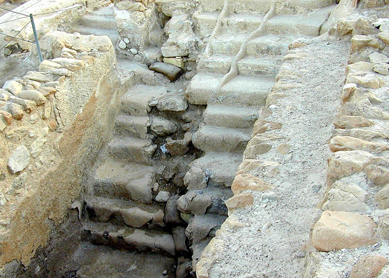To judge from biblical narrative, “leprosy” (tsara’at) was generally recognized in ancient Israel as a specific condition that humans might suffer from, sometimes as divine punishment (
The question is, then, why leprosy—whether in clothing, houses, or skin—defiles. Let us focus on skin, the prototypical case. It has been suggested that leprosy pollutes insofar as the leprous body resembles a decaying corpse (
How then should tsara’at be translated?
Translating this semi-technical (priestly) term raises the problem of anachronism, the challenge of bridging the historical gap between us and the biblical world. “Leprosy” and “leprous” as popular translations of tsara’at (and related words) dates back to the 1611 King James Version of the Bible and its immediate predecessors. This translation survives in the RSV and in the original edition of the NRSV. In the nineteenth century, a condition then known as “leprosy” came to be identified with a disease that in the twentieth century came to be called “Hansen’s disease.” Thus, Hansen’s disease is not necessarily identical to KJV’s leprosy, and it is certainly not identical to tsara’at. Deciding how to translate such a term is largely a function of one’s approach to translation. Translators might, on the one hand, aim for a literal word-for-word translation. Or they might, on the other hand, seek to communicate the overall sense of the original. Tsara’at is arguably a type of proper noun, referring to a specific, recognized condition. A literal translation might reasonably translate it with a similarly pungent term: “leprosy,” for example. (Insofar as few English readers in the twenty-first century have any direct acquaintance with Hansen’s disease, the modern meaning of “leprosy” would not interfere with this translation.) Like most modern scholarly translations, the updated edition of the NRSV (NRSVue) generally tries to convey the sense of the original in idiomatic English. Therefore, the editorial committee opted for a more generic or descriptive translation, “defiling [skin] disease.” This translation conveys the sense of the condition without any anachronistic associations.
Bibliography
- Baden, Joel S., and Candida R. Moss. “The Origin and Interpretation of ṣāra’at in Leviticus 13–14.” JBL 130 (2011): 643–62.
- Levine, Baruch A. The JPS Torah Commentary: Leviticus. Philadelphia: JPS, 1989.
- Frymer-Kensky, Tikva. “Pollution, Purification, and Purgation in Biblical Israel.” Pages 399–414 in The Word of the Lord Shall Go Forth: Essays in Honor of David Noel Freedman in Celebration of His Sixtieth Birthday. Edited by Carol L. Meyers and M. O’Connor. Winona Lake, IN: Eisenbrauns, 1983.




